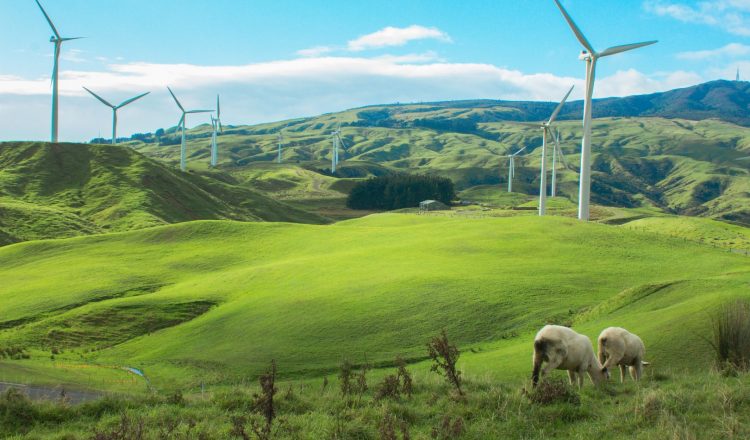Có ba công ty điện thoại di động chính ở New Zealand. Cả ba người trong số họ đều sở hữu và vận hành mạng di động của riêng họ về tháp:
- Via lửa
- Vodafone
- 2Degrees
Ngoài ra còn có rất nhiều nhà khai thác nhỏ hơn thuê các tòa tháp từ các nhà khai thác chính của NZ và bán kế hoạch của họ với mức giá chiết khấu:
- Skinny Mobile (Spark Network)
- Kho di động (2Degree Network)
- La bàn (Spark Network)
- Blue Sky (Spark Network)
- Slingshot (Spark Network)
Điện thoại bị khóa
Nếu bạn đã mua điện thoại của bạn thông qua một nhà cung cấp dịch vụ di động ở nước sở tại của bạn, thì bạn sẽ phải đảm bảo rằng họ mở khóa điện thoại của bạn để bạn có thể sử dụng điện thoại ở nước ngoài và với các mạng khác. Xin lưu ý rằng một số công ty di động sẽ có phí hoặc điều khoản và điều kiện cấm bạn làm như vậy. Trong trường hợp đó, bạn có hai lựa chọn:
- Mở khóa thông qua trình mở khóa của bên thứ ba (Điều này sẽ phá vỡ bảo hành của bạn)
- Mua một chiếc điện thoại mới cho chuyến đi của bạn ở New Zealand. Trong trường hợp đó, chúng tôi khuyên bạn nên mua cho mình một chiếc điện thoại di động “rẻ như cho” khi hạ cánh tại New Zealand, điều này sẽ giúp bạn tiết kiệm tiền trên các hóa đơn internet khổng lồ và bạn sẽ không khóc quá nhiều khi bạn làm hỏng nó trong một chuyến đi bộ.
Tốc độ mạng và phạm vi phủ sóng của mạng điện thoại
New Zealand có ba nhà khai thác điện thoại di động chính chia sẻ thị trường: Spark, Vodafone và 2Degrees. Ngoài sự khác biệt trong công nghệ được sử dụng bởi Spark, Vodafone và 2Degrees, cũng có một sự khác biệt đáng kể trong phạm vi phủ sóng.
Điều đầu tiên, bảo hiểm ở New Zealand thường được tuyên bố với loại tuyên bố này: “Bao gồm 90% những nơi Kiwi làm việc và vui chơi.” Điều này có nghĩa là một mạng lưới có thể chỉ bao gồm 50% diện tích đất nước nhưng 90% diện tích nơi dân cư sinh sống.
- Spark: Bao gồm 98,5% những nơi làm việc và vui chơi kiwi
- 2Degrees: Bao gồm 98,5% những nơi làm việc và vui chơi kiwi
- Vodafone: Bao gồm 98,5% dân số New Zealand
Tốc độ mạng di động New Zealand
Cũng cần lưu ý rằng bất kỳ nhà khai thác nào sử dụng mạng di động Spark thường có internet tốc độ nhanh nhất do mạng XT-4G mới được Spark tung ra nhanh hơn 4G. Vodafone là không xa phía sau trên tốc độ mạng di động với một số lượng tốt các trang web LTE-A và 28 trang web của 4G Band. Tất cả ba nhà cung cấp netowrk hiện đang triển khai 5G.
Thuật ngữ gói điện thoại di động:
Trả trước :
Đây là một loại gói điện thoại không có hợp đồng. Bạn phải trả trước nhiều hoặc ít hơn cho hóa đơn điện thoại của bạn.
Gói:
Đó là một thuật ngữ chung cho đề nghị mà bạn sẽ sử dụng để sử dụng điện thoại của bạn. Nó thường là hàng tháng nhưng cũng có thể là hàng tuần.
Thanh toán khi bạn di chuyển :
Thanh toán cho mỗi tin nhắn, cuộc gọi, sử dụng dữ liệu ở mức cố định. Nó đối lập với một “Gói”.
Combo :
Nó là một loại Gói trả trước. Mỗi nhà cung cấp điện thoại di động cung cấp nhiều combo ưu đãi trả trước cho phù hợp với nhu cầu khác nhau. Combos còn được gọi là “Bundles”, “Value Packs” hoặc “Packs”.
Phần bổ trợ :
Phần bổ trợ là một gói nhỏ bổ sung thêm vào một Combo để bổ sung cho nó. Ví dụ, bạn đang hết dữ liệu trước khi kết thúc một tháng, bạn có thể nhận được một phần bổ trợ của dữ liệu.
Mmins, Văn bản, Dữ liệu
Mb :
Mb là viết tắt của MegaBytes, đây là đơn vị đo lường cho bất kỳ phí dữ liệu nào trên một kế hoạch. Nếu một gói bao gồm 1gb dữ liệu, điều này tương đương với 1000mb.
Mmins:
Min là viết tắt của “Minutes”. Đây là đơn vị đo lường cho bất kỳ khoản phí cuộc gọi nào trên một gói. Nếu một gói bao gồm 1 giờ, điều này tương đương với 60 phút. Lưu ý rằng tất cả các phút được đề cập là phút sử dụng gọi số New Zealand, không phải ở nước ngoài.
Văn bản : Đó là những tin nhắn văn bản được gửi từ điện thoại này sang điện thoại kia. Lưu ý rằng các văn bản hình ảnh được gọi là MMS và không phù hợp với thể loại này.
Khi nào bạn bị tính phí? Tại New Zealand, bạn sẽ chỉ bị tính phí một phút hoặc một tin nhắn khi bạn gọi điện thoại hoặc nhắn tin cho ai đó. Bạn không bị tính phí khi nhận cuộc gọi điện thoại hoặc tin nhắn.

















































